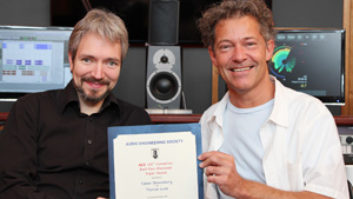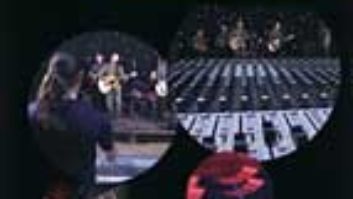Networking continues to weasel its way into every facet of business, including audio. So get hip to IP and IB networking jargon…The InfiniBand Trade Association: Microsoft, Intel, Hewlett-Packard, Sun Microsystems, IBM, Dell and Compaq. Put that many manufacturers in a room and you’re bound to come up with something interesting. Here’s a glossary of InfiniBand (IB) terms that have been slightly redefined by the ITA. Just when you thought it was safe to put down the network primer, along came:
Fabric: A fabric is a collection of host or target channel adapters, links and switches that are cross-connected in a many-to-many scheme rather than individual, isolated point-to-point or loop topologies. In the world of Fibre Channel networks, fabrics describe the physical interconnection of multiple devices interwoven or connected via hubs, switches or HBAs (host bus adapters).
HCA: Host Channel Adapter, the IB component that connects a processor to other IB devices. An HCA is really a bridge and must communicate with both other HCAs and TCAs. HCAs hookup, somehow, to your PC. Just how isn’t yet established, though I expect they’ll be integrated onto the motherboard, presenting an external physical connector for linking. It should allow I/O subsystems, like Ethernet, Fibre Channel, SCSI and interprocessor communication, to converse through the InfiniBand switch fabric, without complex hardware or software interfaces.
Host: A host can be thought of as a server. By the time IB is implemented, servers will mostly be 1U rackmounted boxes rather than the floor-standing tower configurations that are now common.
Link: A link is a dual simplex (simultaneous bidirectional) transmission path between a pair of network elements, such as nodes (HCAs or TCAs) or switches. Link hardware is spec’d as dual simplex, which means that send and receive wires each have their own grounds and transmit data unidirectionally and independently. The more common simultaneous bidirectional method is “full duplex.” In full duplex hardware, both paths share a ground wire. Telephones are full duplex, while two-way radios (“walkie-talkies”) are wireless half-duplex. Both Ethernet and PCI are half-duplex, with one “talker” at a time.
Packet: A packet is a unit of data encapsulated by a physical network protocol header and/or trailer. In general, the header provides control and routing information for directing the packet through the fabric, while the trailer contains data for ensuring packets are not delivered with corrupted contents. Other “packetized” transport mechanisms include IP, the Internet Protocol and the new VXA tape format.
Router: A router connects multiple links and “routes” or directs packets from one link to one or more other links. The forwarding mechanism “looks” within each packet for address data. A router specializes in exchanging packets between subnets. In a similar vein, a TCP/IP router is a basic Layer 3 or Network Layer device that provides media-independent, dynamic packet forwarding.
Subnet: A subnet is a set of host or target-channel adapters, links and switches that are interconnected and agree on a common set of device addresses. In the TCP/IP world, subnets encompass all devices whose IP addresses have the same prefix. For example, the IP subnet for my intranet is 192.168.0, and each device on the net has a unique address octet appended onto the end of the subnet address.
Switch: A switch connects multiple links together and forwards packets from one link to one or more of the other links. The forwarding mechanism “looks” within each packet for address data. A switch specializes in exchanging packets within a subnet. In the TCP/IP world of Ethernet, a switch is typically a Layer 2 or a Data Link Layer device that provides filtering and forwarding of packets. Layer 3 switches are also manufactured, providing routing via hardware at “wire speeds.”
Target: A target can be thought of as a device such as a disk array or network adapter.
TCA: A Target Channel Adapter, the IB component that connects an input/output device to other IB devices. TBAs only require support for capabilities appropriate to the particular input/output device. TCAs live inside of (on a backplane) or are attached to a device, such as a solid-state memory cache or device group, such as a tape library.
LIQUID AUDIO, NAPSTER FORM DEVELOPMENT PACTOn July 26, 2000, Napster Inc. (www.napster.com) and Liquid Audio (www.liquidaudio.com) announced that the two companies have entered into a research and development agreement. “We are working with Liquid Audio because of their extensive knowledge about MP3s. We will be looking to share what we’ve learned with one another,” said Napster CEO Hank Barry. “Liquid Audio’s technologies can be used to benefit artists and millions of music fans using Napster,” said Gerry Kearby, chief executive officer of Liquid Audio.
ADAPTEC AND MICROSOFT:SECURE DELIVERY FOR CD RECORDING?Adaptec (www.adaptec.com) and Microsoft (www.microsoft.com) announced an agreement in which Adaptec’s CD recording applications will support Microsoft’s Windows Media Audio format (Microsoft has already incorporated Adaptec’s CD recording technology in Windows Media Player 7, to facilitate the making of custom CDs.) Adaptec’s CD recording applications featuring Windows Media support will allow rights-managed digital audio content to be recorded onto CDs.
STREAMING MEDIA WEST 2000 IN SAN JOSEStreaming Media West 2000 is a convention for Internet content providers, webcasters and broadcasters interested in producing streaming audio, video and multimedia on the Web. Following the June Streaming Media East conference in New York City and next month’s Streaming Media Europe, Streaming Media West is slated to be the largest, most successful Streaming Media Convention to date. The event takes place in San Jose, Calif. on December 12-14th; more than 15,000 industry professionals are expected to attend.


